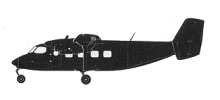Incident Overview

Description
An Antonov An-26 cargo plane, registered SP-FDP, suffered a takeoff accident at Tallinn-lemiste Airport (TLL), Estonia. None of the four crew members were injured. Flight EXN3788 was a scheduled cargo service to Helsinki-Vantaa Airport, Finland. The first officer was pilot flying. The aircraft entered runway 08 from taxiway B on the West end of the runway and lined up for takeoff. The calculated V1 was 182 and Vr was 201 km/h. Ten seconds after commencing takeoff, the pilot flying started rotation without the Vr callout at 123 km/h. The aircraft pitch angle increased to 4.6ø two seconds later. Sixteen seconds into the takeoff, the navigator made the V1 call-out at 160.5 km/h. One second later the flight engineer called “Retracting” in Polish. The aircraft started to pitch down and 3 seconds later it contacted the runway and continued on its belly for 1,228 m before coming to its rest position 3 m right from the runway centerline. Cause: 1. The investigation determined the inadequate action of the flight engineer, consisting in early and uncommanded landing gear retraction, as a cause of the accident. Contributing factors to the accident were: 1. Inadequate crew recourse management and insufficient experience in cooperation and coordination between crewmembers. 2. Start of aircraft rotation at low speed and with fast elevator movement to 17ø, which resulted in: – Lifting the aircraft sufficiently to close the WOW switch and allow the retraction of the landing gear at the speed not sufficient for the climb. – Providing misleading information to FE about the aerodynamic status of the aircraft. 3. Inadequate adjustment of the WOW switch, which allowed the gear retraction to be activated before the aircraft was airborne. The position of the landing gear selector on the central console is not considered as a contributing factor to the accident. However, investigation finds necessary to point it out as a safety concern, specifically in situations, where crewmembers are trained and/or used to operate the aircrafts with gear selector location according to the EASA Certification Standards CS-25. Positioning of the gear lever to the location which is compliant to EASA document CS-25, would create additional safety barrier to avoid similar occurrences, specifically in aircrafts where landing gear is operated by FE.
Source of Information
http://www.reporter.ee/2010/08/25/katkise-telikuga-kaubalennuk-tegi-lennujaamas-hadamaandumise/http://www.reporter.ee/2010/08/25/katkise-telikuga-kaubalennuk-tegi-lennujaamas-hadamaandumise/Primary Cause
Inadequate crew response management and insufficient experience in cooperation and coordination between crewmembers.Inadequate crew response management and insufficient experience in cooperation and coordination between crewmembers.Share on:




